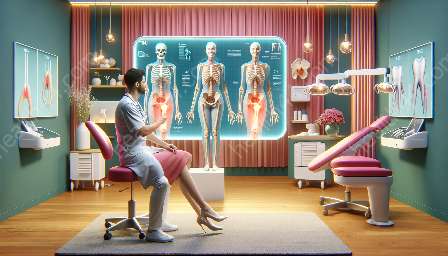The temporomandibular joint (TMJ) plays a crucial role in allowing us to chew, speak, and open and close our mouths. However, when the jaw is misaligned, it can lead to temporomandibular joint disorder (TMJ disorder), causing pain and discomfort. This article explores the impact of jaw alignment on TMJ and how orthodontic considerations can help in managing TMJ disorder.
The Role of Jaw Alignment in Temporomandibular Joint Disorder (TMJ)
The temporomandibular joint is a complex joint that connects the jawbone to the skull. It allows for the movement of the jaw, facilitating functions such as chewing, speaking, and yawning. When the jaw is misaligned, it can lead to TMJ disorder, causing a range of symptoms such as jaw pain, difficulty chewing, clicking or popping sounds in the jaw, and headaches.
Jaw misalignment can result from various factors, including genetics, injuries, arthritis, and teeth grinding (bruxism). When the jaw is not in its correct position, it can put undue pressure on the temporomandibular joint, leading to inflammation, muscle tension, and discomfort.
Furthermore, the misalignment of the jaw can affect the overall occlusion of the teeth. Malocclusion, or the misalignment of the teeth when the jaws are closed, can contribute to TMJ disorder. The relationship between the upper and lower teeth and their alignment when biting and chewing can impact the function of the temporomandibular joint.
Orthodontic Considerations in Temporomandibular Joint Disorder
Orthodontic treatment plays a vital role in addressing jaw misalignment and malocclusion, thereby helping to manage TMJ disorder. Orthodontists are trained to evaluate and correct issues related to the alignment of the teeth and jaws, which can have a direct impact on the temporomandibular joint.
Orthodontic considerations in the management of TMJ disorder may involve the use of braces, aligners, or other orthodontic appliances to bring the teeth and jaws into proper alignment. By addressing malocclusion and optimizing jaw positioning, orthodontic treatment can help alleviate the strain on the temporomandibular joint and reduce TMJ disorder symptoms.
Additionally, orthodontists work collaboratively with other dental and healthcare professionals, such as maxillofacial surgeons and physical therapists, to develop comprehensive treatment plans for patients with TMJ disorder. This multidisciplinary approach ensures that the underlying causes of jaw misalignment and TMJ disorder are effectively addressed.
Effective Treatment Options for Temporomandibular Joint Disorder
Addressing jaw alignment and its impact on TMJ disorder requires a tailored approach that considers the unique needs of each patient. In addition to orthodontic treatment, other interventions may be recommended to manage TMJ disorder effectively.
These may include:
- Physical Therapy: Therapeutic exercises and techniques aimed at improving jaw mobility, reducing muscle tension, and enhancing overall jaw function.
- Dental Splints: Custom-made oral appliances that help realign the jaw and alleviate pressure on the temporomandibular joint.
- Stress Management: Techniques to mitigate stress and anxiety, as well as to address habits such as teeth clenching and grinding.
- Medication: In some cases, pain-relieving medications or muscle relaxants may be prescribed to alleviate TMJ disorder symptoms.
- Surgical Intervention: For severe cases of TMJ disorder, surgical procedures may be considered to address structural issues contributing to jaw misalignment.
Conclusion
Jaw alignment plays a significant role in the development and management of temporomandibular joint disorder. Understanding the relationship between jaw alignment, malocclusion, and TMJ disorder is crucial in providing effective treatment for patients experiencing TMJ-related symptoms. Orthodontic considerations, in conjunction with a comprehensive approach involving other healthcare professionals, can help address the underlying causes of jaw misalignment and alleviate the discomfort associated with TMJ disorder. By combining orthodontic treatment with other targeted interventions, individuals can experience improved jaw function and a reduction in TMJ disorder symptoms, ultimately enhancing their overall quality of life.


